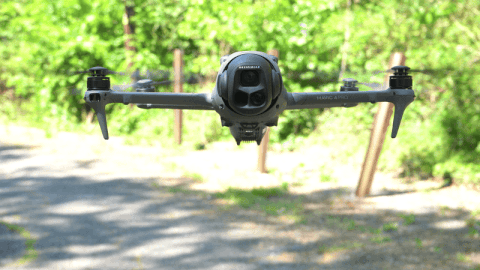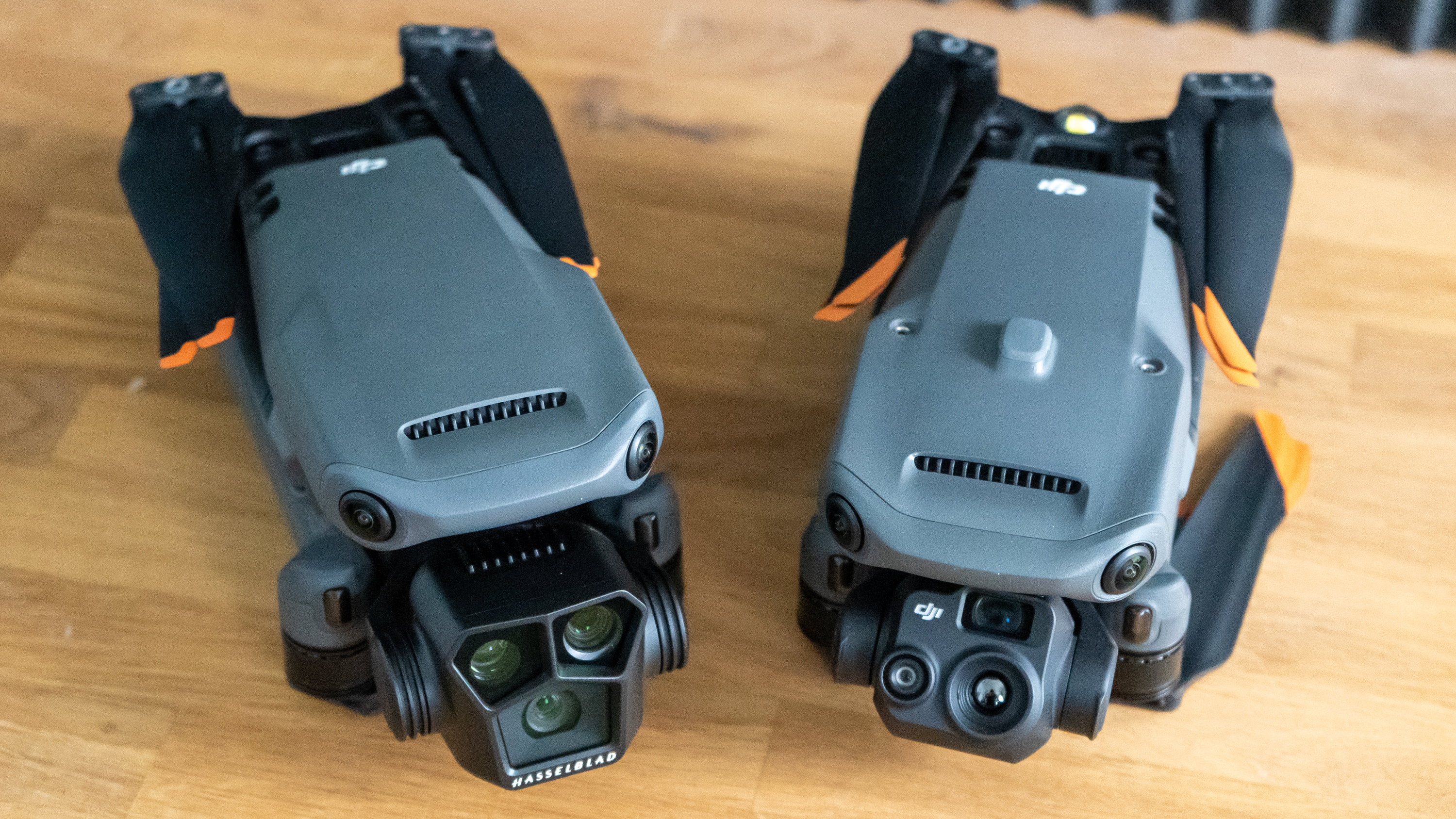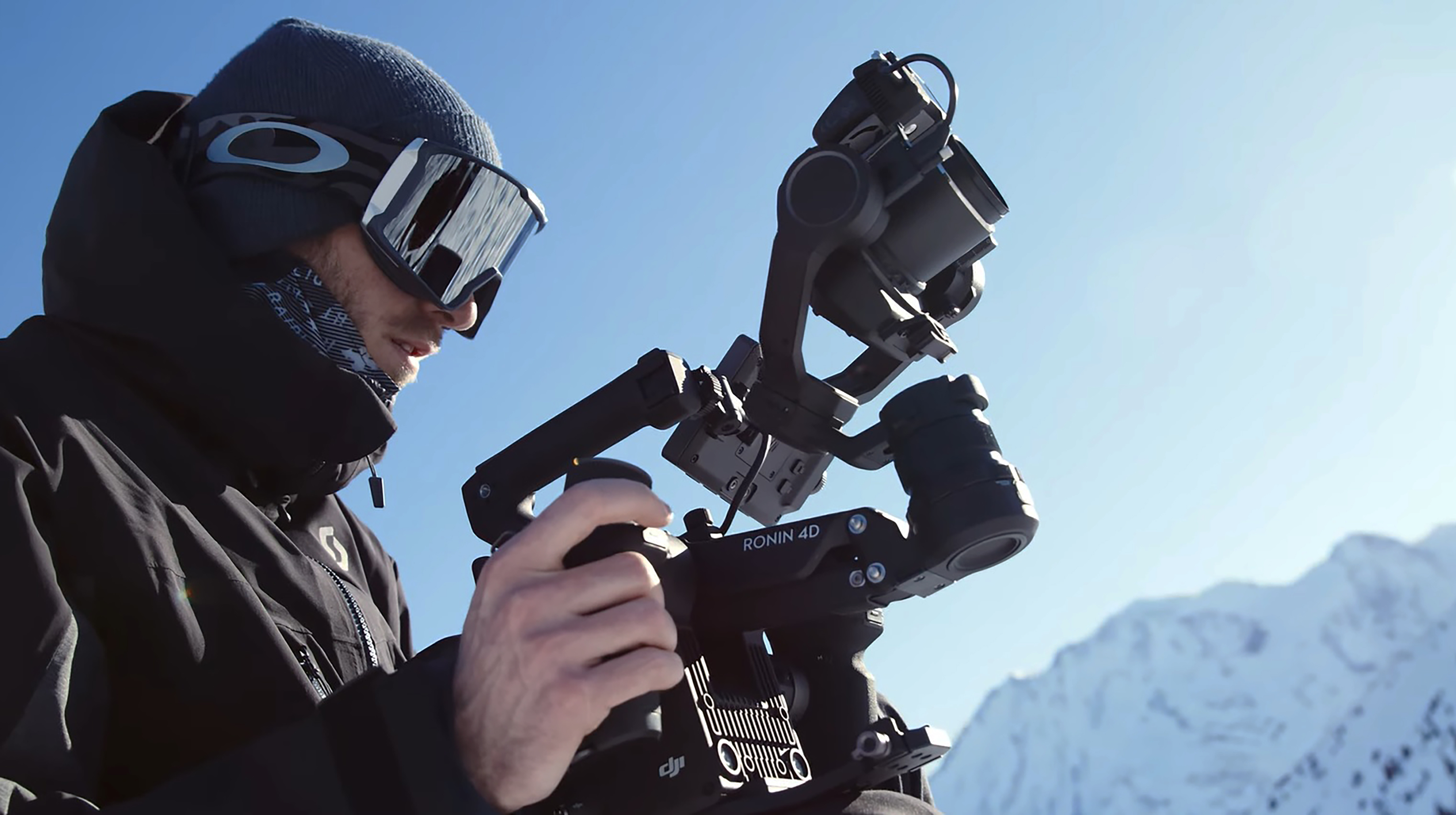Exclusive DJI interview: 460,000 American jobs and public safety at risk says Head of Global Policy
I sit and imagine an America without DJI, a company going from winning OSCARs to the brink of a ban of its drones and cameras. What hope remains for users?

DJI's Adam Welsh is Head of Global policy, putting him right at the top of the company's interaction with governments around the world, including, perhaps most interestingly at the moment, the USA where the company faces a pending ban so I asked him about that straight away:
I think all the questions people are asking involve how long we've got left with DJI products on the shelf?
Adam W: You're obviously aware of the section 1709 of the fiscal year 2025 NDAA that calls for Autel and DJI to be reviewed. Our position throughout this has been, "Go ahead and audit us", right? We've been audited before, and we clear that bar. If people do technical audits, we're on good ground, right? But make it thorough. Don't just put out a report of a bunch of hypotheticals or, you know, 'could possibly do such and such'. Actually do a proper technology audit report. That's always been our position.
But, as you know, that section is written in a way that is it seems to be a backdoor to just banning it, right? So if you look at the fact it doesn't name an agency, it could be one of five. So it could be the NSA, the DOD, it could be ODNI, FBI, or DHS. You know, we've written to all five on two occasions and not received any reply from any of them.
Incidentally, how long do you think thorough takes?
Adam W: So, again, there's no scope to this that's defined in the statute. It's very vague. The fact it doesn't even name an agency is vague enough. Yeah, yeah. It doesn't give a scope. It doesn't say how how It doesn't say how many products. I mean, you as you know, we produce a wide range of products. It doesn't say all of those have to be audited or anything else. So, if you had to audit every one of our products and you were going to do a very thorough, like not just communications architecture, like where it communicates to, but also look at like chipsets and everything else and like really like break down the hardware. I mean, that could be quite a lengthy process and would take more time than we have available now. We've commissioned audit reports ourselves in the past, they've taken six months or even up to a year to complete. Yeah. So, uh, so, you know, if you if you do this stuff thoroughly, like it can take a while. So that's a concern for us.
So, the deadline...
Ultimately, the practicalities are simple; the deadline is 23rd December and I pointed out that leaves less time left than it'd take to do the thorough review, even if any government department took up the mantle. Plus, of course there is a government shutdown among other delays.
The best camera deals, reviews, product advice, and unmissable photography news, direct to your inbox!
Adam W: We lost time on the front end because a transition year is just a bad year to get things done. It takes a long time for the US government when a new administration comes in to appoint people to key positions... there are still empty spaces in some of these agencies where people have not gone through Senate confirmation, so you lose months on the front end. And now we're losing months on the back end because of the government shutdown. All of this is obviously beyond our control. So, uh, so yeah, it's another concern.
Is it time to think about alternatives?
So, I mean, I have to ask, I'm sure you might not have any thoughts about this, but uh are there other ways that DJI can get its technology into America other than selling it under the DJI brand?
Adam W: So, I mean, we're not we're not at a point of like looking for for a for a partnership or anything like that, uh beyond where we are now. We're looking to actually try and make sure we get this audit done, right? So, we're very, very focused on on getting the audit done, proving. I mean, the audit report has to be made public, so this would be public proof that we are secure, and that's our entire focus. Once December 23rd comes along, like we may have to try and figure out what other strategies we could focus on, but right now, like it's it's about getting the audit done, going through the process, trying to get somebody to do the responsible thing on this and and actually do a thorough review.
And what might happen to the US drone market?
Adam W: And I just want to make one thing clear, though. I mean, it's not like this is just DJI that gets harmed. I mean, you know this, right? If if if you look at the harm to American businesses, this is the shocking thing, right? There's about 460,000 jobs that are supported through the use of DJI products across the United States. We are 70 plus percent of the market. You know, when they were interviewed, you know, small service providers said two-thirds of their membership would go out of business if they didn't have access to our products. I mean, this is a lot of collateral damage. Not to mention the police, firefighters, search and rescue teams that use our products to keep their their people safe or to find and and and help people in in distress. Yeah. The collateral damage, right?
Consumers in general who already have DJI products, originally, we didn't think, I think, when we first spoke about this, have much to worry about, at least about the things they already owned. But...
Adam W: That's still the case. I think. I think you're referring to the FCC recent decision from I think it was October 28th. Yeah. So, our read of that decision is that it would still leave uh existing products in the marketplace untouched. So, if you own a DJI product, you should still be able to operate it. I think what it does, it does and this is not even automatic, but what it does, it gives them the power to go through an additional review of companies on the covered list and decide whether each product should be basically retroactively like uh have their have their certifications pulled, and that would prevent them from marketing or selling into into the United States.
Yeah, that was my reading of that covered list scenario. Then, if you follow it a long way down the line, if you're you're not allowed to sell new products and you're not allowed to sell your existing product line, you're also probably not going to be very excited about any service, you know, or, you know, maintenance for existing products. And in fact, in general, if you're banned as DJI straight after December, are you allowed to support existing products?
Adam W: So, I don't think there's anything to do with the covered list that would prevent us from supporting our existing customers.
Doesn't support potentially involve delivering like repair components?
Adam W: Exactly. Part of the issue might be around getting the components we need to fix products. But also, sometimes people return a product where it's not really worth repairing, and so we would normally do a replacement product under those conditions, and obviously that would be impossible under under this new edict. But, just I just want to also want to be clear though, the way the way I read the FCC decision is that if we are added to the covered list on December 23rd – we're not there yet, but if that if if the worst should happen – there is still a process they have to go through and a consultation that they have to go through before making anything retroactive on the marketing and selling of those products.
So, the rest of the world might be more interesting...
So you've just been uh traveling around the world to to other places. So obviously, you're definitely have it in the back of your mind that other places are going to be of more interest to DJI?
Adam W: We sell in over 100 markets. We've got healthy growth across the globe. You know, we're doing well across Latin America, Europe, and elsewhere across the Asia-Pacific. So I'm not trying to say the US isn't an important market. It's one of the leading consumer markets across the globe for almost every electronics manufacturer, but we do have healthy growth elsewhere.
[I let him continue into his reason for visiting the UK]
Adam W: Actually the trip I was doing in the UK, I was talking about aviation regulation – which used to be my job. It was so much fun.
I wasn't talking about data security [that much, because] for the most part, that's a very US conversation. And I think it's a US conversation because the US is basically one of the few countries where we have a domestic [drone] manufacturing competitor base that is making it an issue. [If] you go to a country that is not seeking to basically use protectionism to create an industry, and they're just interested in what kind of productivity efficiency gains. How can you make our police forces and our firefighters more effective? You know, particularly in the UK, it's about how do you boost productivity? It's a very different conversation because there isn't a base of competitors lobbying to remove us.
UK regulations are changing a little for consumers though?
I actually be interested to know what was the so the main thing in the UK was?
Adam W: We wanted to catch up around issues to do with beyond visual line of sight (BVLOS) and some of the harmonization around class markings as well. As you know, post Brexit, we just want to see how harmoniously all this has been working as a manufacturer. It's easier for us if the UK and EASA are relatively aligned on things like class markings.
I also asked about the fact that release dates hadn't been globally harmonious any more "I felt like the part, you know, I felt like the world used to be getting smaller and now we're starting to feel like the world's getting bigger again"
Adam W: Yeah, that's certainly true. Obviously, we're not the only company impacted by that – it's a global issue. It seems like the world is starting to Balkanize into trade blocks. Hopefully some of this can be managed, though. I think the US is a particularly tough case for everybody. It's not just for us, but hopefully the rest of the world will try to find a way to be a bit more harmonious and allow like the benefits of trade to continue.
We understand that the UK sees sees some opportunity to differentiate from the EU post Brexit. We think there are ways to do that where they can take some advantage of it. They could be more nimble and make things less complex in other areas. And actually, I think that's what the CAA [UK Aviation authority] is trying to do. They want to make things less complex.
As a manufacturer, I have to say with the class markings, it's just a lot simpler for us if they follow the EASA template, where the work has already been done, where we've done the work also. You know, so it would just be much easier. Manufacturers like it when when when they sort of harmony as much as possible across different markets. And so that that's sort of our take on it.
Picturing an America after a DJI ban...
There is a lot more on the UK, which I'll post separately, but to round off, let's just picture an America without DJI...
Adam W: So, we're we're coming up on crunch time, like literally, we're at the point where we're we're only weeks away from this becoming, you know, like a fait accompli kind of thing. Yeah. And we really need people to come forward and point out what this will do to their businesses. I mean, there's been a lot done already, but we need people to engage with the administration and with members of Congress to just to make very, very clear that this is going to do harm to them.
What harm could it do?
Adam W: We did an economic impact study back in 2023, and it showed that the use of DJI products supports about 460,000 jobs and about $116 billion worth of economic activity. It's it's not a small number. Like, you got to think, we are the backbone of of the industry. When when just to just to give you one example, when the Department of Interior tried to to move away from DJI and Chinese drone products, the government accountability office put out a report on the attempt.
They found that the drone the drones they were trying to buy were far more expensive, often could not do not do the jobs that they were they were required to do. They didn't have the specifications. Sometimes delivery was eight months or more from order. So, you'd miss the fire season, right? The Department of Interior use these things for for controlled burns, things like that. And so the Department of Interior were either were either abandoning projects completely or putting people up in helicopters, which is actually the leading loss of life at the Department of Interior – helicopter crashes. So, you know, you're you're talking about not doing the work or putting people at risk. You know, this just extrapolate from that one government department out more broadly, right? What this is going to do. It's going to have big economic harm. You know, like 460,000 jobs at risk. It's going to put people put lives at risk where police and firefighters don't have the products they need. I mean, this is not a small, small change.
But there are now much cheaper American drones?
Adam W: There really aren't much cheaper. They like to say that like the technology is caught up and that the cost difference is is can be dealt with. The simple fact is that's not true, right? They often don't have the camera quality that we have, and they just aren't able to do the missions, and they are so much more expensive still.
...and the photography market especially?
Adam W: Our equipment beyond drones is widely used. You know, our gimbal systems and others are like, you know, we just recently won a technical Oscar for our [Ronin] gimbal system. You know, like we're our products are used widely across the movie industry, and and and it's not clear that there are good alternatives, particularly for our drone products. I think across the prosumer, that kind of like that higher level individual that you were talking about, that wants a quality product, nobody's really trying to serve that niche. I think even in that entry-level consumer category, I mean, I remember when I first flew a drone around like 2016, a very low-quality drone, and it ended up on my neighbor's roof because the signal strength wasn't good enough, right? Yeah. That's how you lose people from the industry. I always hate to hear about somebody buying a $100 drone. I'm like, please, you know, the way people get into this market and then become both consumer users and then sometimes eventually enterprise users is through relatively high-quality, but relatively, you know, good value products, like the ones we produce in that consumer niche, like the Mini, things like that. That's a great entry-way product. I don't see a good alternative anywhere.
Check out the early Black Friday drone deals

With over 20 years of expertise as a tech journalist, Adam brings a wealth of knowledge across a vast number of product categories, including timelapse cameras, home security cameras, NVR cameras, photography books, webcams, 3D printers and 3D scanners, borescopes, radar detectors… and, above all, drones.
Adam is our resident expert on all aspects of camera drones and drone photography, from buying guides on the best choices for aerial photographers of all ability levels to the latest rules and regulations on piloting drones.
He is the author of a number of books including The Complete Guide to Drones, The Smart Smart Home Handbook, 101 Tips for DSLR Video and The Drone Pilot's Handbook.
You must confirm your public display name before commenting
Please logout and then login again, you will then be prompted to enter your display name.



